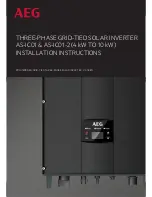
the matching command. The parameter type is listed adjacent to
each named parameter.
More About Commands
Query and Event Commands.
Because you can query any value that
you can set, the query form of each command is not shown explicitly
in the command tables. For example, the presence of the swept CW
generator : SWEep :
command implies that a : SWEep :
also exists. If you see a table containing a command ending with
a question mark, it is a
query
only command. Some commands
are
and cannot be queried. An event has no corresponding
setting if it causes something to happen inside the instrument at a
particular instant. For example, :
causes a
certain trigger sequence to initiate. Because it is an event, there is no
query form of :
:
Implied Commands.
Implied commands
appear in square brackets
in the command table. If you send a subcommand immediately
preceding an implied command, but do not send the implied
command, the instrument assumes you intend to use the implied
command, and behaves just as if you had sent it. Note that this
means the instrument expects you to include any parameters
required by the implied command. The following example illustrates
equivalent ways to program the swept CW generator using explicit
and implied commands.
Example swept CW generator commands with and without an
implied commands:
: SWEep :
:
ive 6
using explicit commands
6
using implied commands
Optional Parameters.
Optional parameter names are enclosed in
square brackets in the command table. If you do not send a value
for an optional parameter, the instrument chooses a default value.
The instrument’s command dictionary documents the values used for
optional parameters.
Program Message Examples
The following parts of the swept CW generator SCPI command set
will be used to demonstrate how to create complete SCPI program
messages:
: STATE
: POWER
: LEVEL]
1-72 Getting Started Programming
















































